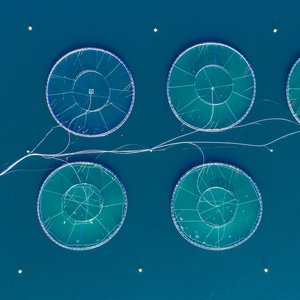The U.S. Department of Agriculture’s National Agricultural Statistics Service (NASS) has released the 2013 Census of Aquaculture results. This report is the result of the third national census conducted by NASS to measure the U.S. aquaculture industry. The last Census of Aquaculture was conducted in 2005.
“The 2013 Census of Aquaculture expands on the data collected about aquaculture during the 2012 Agriculture Census and provides a more comprehensive picture of the aquaculture sector at the national and state levels,” said NASS Administrator Joseph T. Reilly. “There is always a need for current industry-specific data and the results from the census of aquaculture will be used by federal, state and local governments, agribusinesses, trade associations and producers to make decisions impacting this specialized area of agriculture.”
The aquaculture census provides detailed information relating to production volume and methods, surface water acres and sources, sales, point of first sale outlets, and aquaculture distributed for restoration, conservation, enhancement, or recreational purposes.
Data highlights from the 2013 Census of Aquaculture include:
- Total sales of aquaculture products in 2013 was $1.37 billion, an increase of 26 percent from 2005.
- Sales of food fish was $732 million, an increase of 9 percent from 2005.
- Crustacean sales in 2013 was $85 million, up 59 percent from 2005.
- The sales of mollusks was $329 million, an increase of 62 percent from 2005.
“Data from the census of aquaculture allow government leaders to more accurately allocate national and local funds to support the future of the industry, such as extension service projects and agricultural research,” said Reilly. “Extension and university representatives rely on the data to help determine research needs and to justify funding for programs aimed to develop new and improved methods of aquaculture production and profitability.”
For the 2013 Census of Aquaculture, an aquaculture farm is defined as any place from which $1,000 or more of aquaculture products were produced and sold or distributed for conservation, enhancement or recreation during the census year. Aquaculture is defined as the farming of aquatic organisms, including: baitfish, crustaceans, food fish, mollusks, ornamental fish, sport or game fish and other aquaculture products. Farming involves some form of intervention in the rearing process, such as seeding, stocking, feeding or protection from predators.
Farming also implies individual or corporate ownership of the stock being cultivated, in a controlled environment at least part of the time. Fish, crustaceans, mollusks, and other aquatic products which are caught or harvested by the public from non-controlled waters or beds are considered wild caught and are not included as aquaculture.







